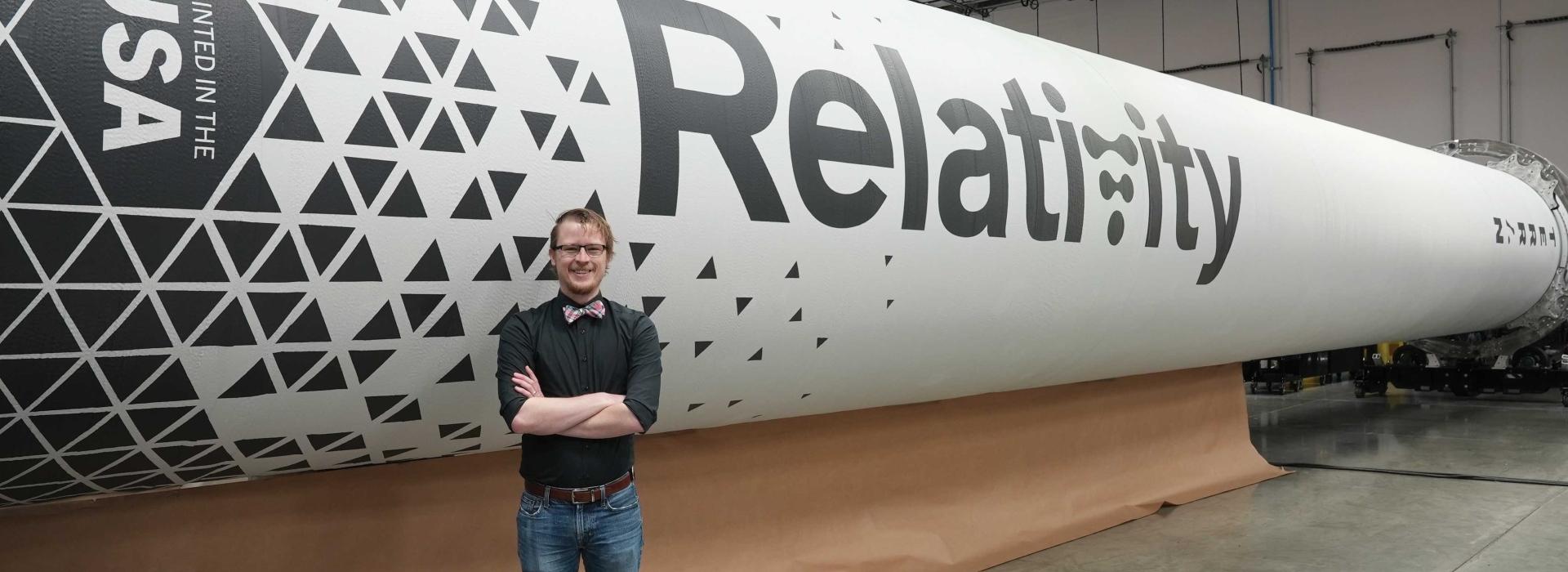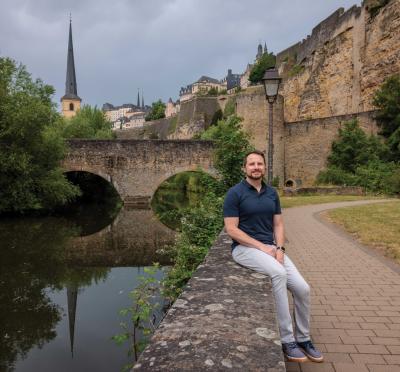Take it from A.J. Fillo: If you want the adrenaline rush of a lifetime, try launching the first-ever 3D-printed rocket.
“When we lifted off, I’ve never heard cheering like that in my life,” said Fillo, B.S. mechanical engineering ’14, M.S. ’16, Ph.D. ’19.
Fillo worked in several roles in his two years at the Long Beach, California-based commercial rocketry company Relativity Space, helping prepare the Terran 1 rocket for its March 2023 launch. But since that momentous liftoff, he’s turned his focus back to Earth and onto a new challenge: climate change. Fillo recently began working as a senior combustion engineer at the climate startup Arbor, also based in California, and while rocket launches and carbon capture might seem like diametric pursuits, Fillo is one of many former rocket engineers at the company.
“You have these incredibly talented people that have figured out how to launch things into orbit,” Fillo said. “Now we’re trying to say, ‘OK, let’s redirect that same energy and figure out how do we save everything below?’”
Fillo has always created art and enjoyed working with his hands. So, after deciding to leave the University of Missouri’s undergraduate journalism program to pursue engineering, he found a natural fit with Oregon State University’s focus on participatory learning.
“I’ve worked with a lot of other universities, and I think Oregon State has a unique, hands-on approach. They’re very focused on actually building stuff,” he said.
Fillo found this especially true in the introduction to thermodynamics class taught by Nancy Squires, whose teaching style focused on demonstrations and problem-solving.
“That really resonated with me,” Fillo said. “You can read as many textbooks as you want, but the thing that helps you learn is actually working through problems.”
Squires, a senior instructor of mechanical engineering who died in 2020, also mentored Fillo when he began leading classes himself as a graduate student instructor.
“I think the thing that really solidified my love for the field is when I got an opportunity to
teach,” he said.
Fillo took that love outside the classroom and into the wider world throughout his time at Oregon State, producing and filming large-scale science demonstrations for public audiences at the Corvallis-Benton County Public Library and other venues. After leaving Oregon State in 2019, he worked on the PBS science series “Nova” as part of the American Association for the Advancement of Science’s mass media fellowship program. There, he created science videos, including one about his family’s personal experience with Alzheimer’s disease.
“The stuff I did for ‘Nova’ grew out of the general passion and curiosity I picked up at Oregon
State,” he said.
While still in the lab, Fillo’s research focused on turbulent combustion. After receiving a National Science Foundation graduate research fellowship in 2015, he completed visiting research positions at Caltech and Georgia Tech and developed an algorithm to simulate the turbulent flows in jet fuel flames with Oregon State’s Kyle Niemeyer and Caltech’sGuillaume Blanquart for his dissertation. The work involved reducing the energy cost of these complex simulations.
“We came up with an algorithm that takes the amount of memory you need and reduces it down to effectively something you could run on a floppy disk if you were really clever,” he explained.
His motivation to pursue this numerical challenge?
“Honestly, it was just a fun puzzle,” Fillo said. “Throughout my career I’ve moved to a lot of different areas. In engineering, the thing that really motivates me the most is just scratching that itch of: ‘Are we learning something new? Is there a challenge?’”
After graduating with his Ph.D., that itch took Fillo to WET Design, the company responsible for well-known water features, like the fountains at the Bellagio Hotel and Casino in Las Vegas. He then made his way to Relativity Space, where he worked on several parts of the rocket, figuring out how to build its engine and thrust chamber and how to print it efficiently. He credits his Oregon State training for his ability to tackle problems head-on. At Relativity Space, he said, “if there was a problem on the floor, something that we needed to figure out quick, I was asked to step in.”
Now at Arbor, Fillo’s excited to apply his skills to one of humanity’s biggest puzzles. He’s helping build out the company’s carbon capture and sequestration process, which uses rocket combustor technology to turn carbon-rich biomass from dead trees, cut down to prevent wildfires, into storable carbon dioxide gas, with clean water and electricity as byproducts.
“Ultimately, one of the reasons I got into combustion was to help reduce the need for combustion,” Fillo said. “What we’re doing is basically building a rocket engine that helps save the world.”



